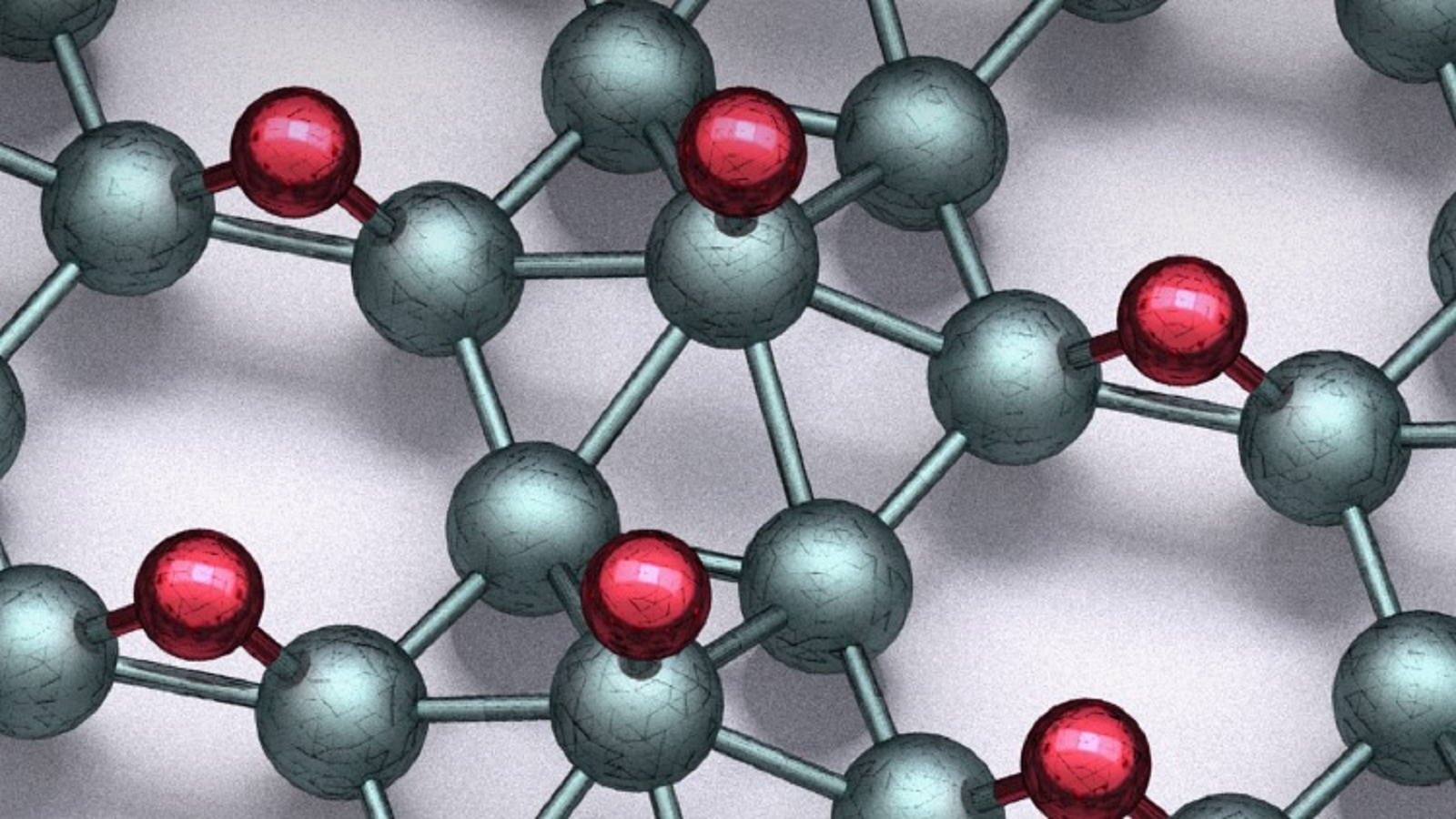Apr 6 2021
What is thinner than thin? One of the answers is 2D materials. These are unique materials of science whose width and length measure just one or two atoms thick.
 Nanoelectronics, Quantum Information Technology" />
Structure of borophane sheet. Red, hydrogen; teal, boron. Image Credit: Qiucheng Li and Chaitanya Kolluru.
Nanoelectronics, Quantum Information Technology" />
Structure of borophane sheet. Red, hydrogen; teal, boron. Image Credit: Qiucheng Li and Chaitanya Kolluru.
These materials make it possible to significantly increase the device performance for batteries, electronic devices, medical equipment, and solar cells.
Researchers from the Argonne National Laboratory of the U.S. Department of Energy (DOE)—in association with Northwestern University and the University of Florida—have reported a new breakthrough in the Science journal that involves a 2D material, known as borophane.
Borophane is a sheet of hydrogen and boron measuring just two atoms in thickness.
In recent years, one of the most interesting advancements in materials science has been the 2D sheet of graphene or carbon, which is 200 times stronger than steel and yet has a thickness of one atom. An atom-thick boron sheet, known as borophene—with an 'e'—is a similarly newer and potential material.
A multi-institutional research team, including scientists in Argonne’s Center for Nanoscale Materials—a DOE Office of Science User Facility—initially produced borophene early in 2015.
Although graphene is only a single atomic layer out of the several same layers in the standard material graphite, borophene lacks a corresponding parent structure and is highly difficult to produce. Besides this, the fast reaction between borophene and the atmosphere means that the former is highly unstable and readily changes its form.
Borophene by itself has all kinds of problems. But when we mix borophene with hydrogen, the product suddenly becomes much more stable and attractive for use in the burgeoning fields of nanoelectronics and quantum information technology.
Mark Hersam, Professor of Materials Science and Engineering, Northwestern University
The researchers first developed the borophene on a silver substrate and then subjected it to hydrogen to create the borophane.
They subsequently revealed the complex borophane structure by integrating a computer-vision-based algorithm with a scanning tunneling microscope.
The algorithm compares experimental measurements with hypothetical simulations of structures.
Computer vision is a branch of artificial intelligence in which high performance computers are trained to figure out and interpret the visual realm.
Although the borophane material has a thickness of just two atoms, its structure is rather complicated because of the various potential arrangements for the hydrogen and boron atoms.
We have tackled a significant challenge in determining the atomic structures from scanning tunneling microscopy images and computational modeling at the atomic scale with the help of computer vision.
Maria Chan, Nanoscientist, Center for Nanoscale Materials, Argonne National Laboratory
Considering the success in exposing this intricate structure, the automated analytical method developed by the researchers should be relevant in detecting other complex nanostructures in the days to come.
What is really encouraging from our results is that we found a borophane nanosheet on a silver substrate to be quite stable, unlike borophene. This means it should be easily integrated with other materials in the construction of new devices for optoelectronics, devices combining light with electronics.
Pierre Darancet, Nanoscientist, Center for Nanoscale Materials, Argonne National Laboratory
These light-emitting and light-controlling devices could be integrated into medical equipment, telecommunications, etc.
“These findings are an important step in realizing borophane’s incredible potential as a two-dimensional material for nanoelectronics,” added Chan.
Study authors include Q. Li, V.S.C. Kolluru, M.S. Rahn, E. Schwenker, S. Li, R.G. Hennig, P. Darancet, M.K.Y. Chan, and M.C. Hersam.
The study was funded by the Office of Naval Research, the National Science Foundation, the DOE Office of Basic Energy Sciences, and Laboratory Directed Research and Development funding from Argonne National Laboratory.
Journal Reference:
Li, Q., et al. (2021) Synthesis of borophane polymorphs through hydrogenation of borophene. Science. doi.org/10.1126/science.abg1874.